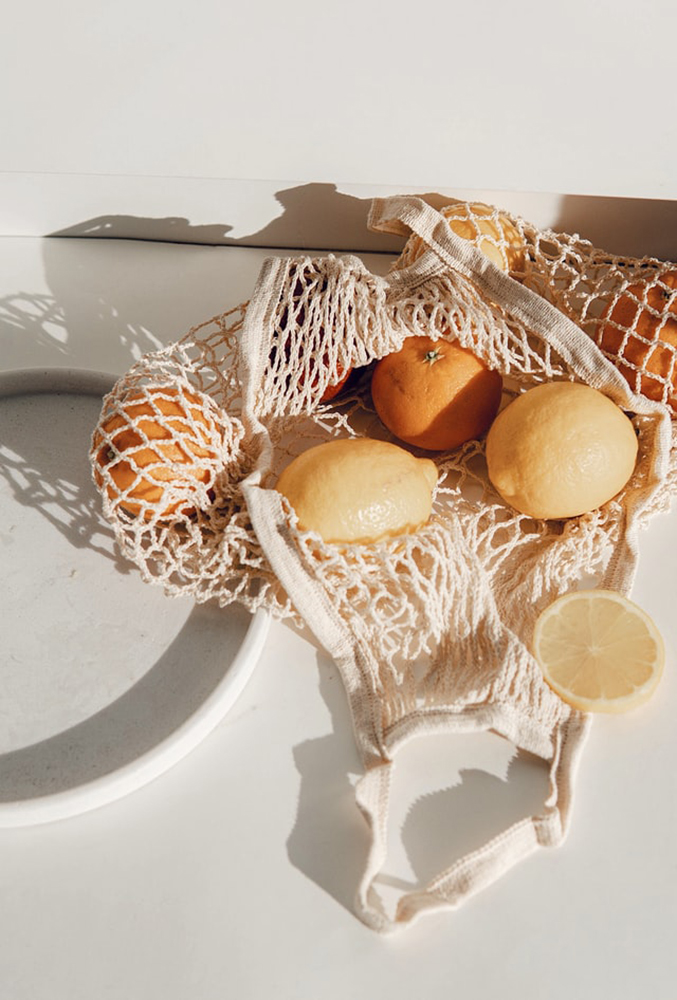


While there is certainly no shortage of trendy superfoods on the market, eating nutrient-dense foods does not mean you have to spend your entire paycheck on groceries. With the plethora of options, especially in North America, it can seem like eating organic, unprocessed foods is highly expensive and unattainable at times. While this is true, there are also ways you can maximize your groceries and save a lot of money. And who doesn’t love that?
Most Americans spend anywhere from $314 to $514 on groceries in a single month. And while trendy superfoods are fun to try, they are not a hallmark for living a healthy lifestyle. It is paramount to recognize the amount of privilege we have when choosing what we want to eat and when. Even if you were to refrain from buying swanky snack foods on Instagram, it is still challenging to find high-quality animal products and produce within an affordable range.
While most of us are not experiencing poverty, there are 38 million Americans who receive the Supplemental Nutrition Assistance Program (SNAP), and 66% of those people nationally are families with children. With food waste running rampant and the challenging times we live in, saving money wherever you can is always welcomed. Even if you are not living on a budget, the tips below will help you maximize your groceries and save money while doing so.
1.Buy in Bulk:
While buying in bulk may seem expensive at first, it can save you a lot of money in the long run. Having nutrient-rich ingredients like rice, dry beans, oats, and quinoa, and farro are always great to have on hand. These functional staples can be made into savory or sweet dishes. Not only does buying in bulk prolong your groceries, but it saves you trips to the store, is often better for the environment, and almost always cheaper per unit.
2. Buy Frozen Foods:
Frozen foods may not seem as alluring as their fresh counterparts, but they are just as nutritious, if not more. In this study, it was shown that frozen produce like peas and broccoli contains more vitamin C than their fresh varieties. If you want to learn more about buying frozen produce and animal products, my guide can be found here.
3. When In Doubt, Roast Vegetables:
If you have an abundance of heartier vegetables that you do not know what to do with, roast them! There is nothing easier than chopping up onions, sweet potatoes, brussel sprouts, carrots, parsnips, etc. Tossing them in a generous amount of healthy fat (think extra virgin olive oil, avocado oil, coconut oil, or ghee), a hefty sprinkle of sea salt and fresh black pepper to make something easy and delicious. Once you have your roasted vegetables, you can top grain bowls with them, make warming salads, wraps, or eat them by themselves. The options are limitless.
4. Save Your Food Scraps:
One way I love utilizing my vegetable food scraps is by saving and freezing them. All you need is a generous air-tight bag or container, and start filling it up with vegetable peels, ends, skins, and pop them into the freezer. Once the container is filled, you can make a gorgeous vegetable stock that you can use to cook grains in or merely eat on its own. For a fool-proof recipe for making homemade stock or bone broth, see here.
5. Put Your Blender to Work:
Your blender can do way more than making an Instagram-able smoothie! But if we are talking smoothies, adding frozen zucchini, cauliflower and spinach is a simple way to use up any leftover veg! Alternatively, if you have wilted or bruised produce, consider making soups, dips, or spreads before tossing them in the bin. Better yet, combine some of your bulk, dry goods like beans and blitz them with peas or wilted greens to make a decadent dip you can add to your sandwiches and beyond.
6. When in Doubt, Stir-Fry:
Stir-frys are possibly one of the best solutions for lackluster veggies. Whether you have greens, turnips, rutabaga, or leeks, coating them in an array of spices and sauces can easily take your meals up a notch. If you are nearing your vegetable’s expiration date, try stir-frying them in healthy fat, smashed garlic, sea salt, and black pepper to serve as a side dish. Not to mention, it is another incredible way to use some of your bulk items like quinoa, farro, or rice.
7. Diversify Where You Shop:
Buying organic does not always have to be expensive. Because of its increasing popularity, there are more options than ever. Check out Trader Joe’s, Costco, and online shops like Brandless, Thrive Market, and iHerb for a wide range in organic and local foods. Also, be sure to check out this list here to see what you should be purchasing organic. FYI- there are only about ten or so items I always buy organic.
8. Pre-Plan Your Meals:
Have you ever walked into the store, only needing a few things, and then left with a cartful of groceries or snacks? While solely buying what looks good at the moment is fun, it can lead to a much higher shopping bill later. By planning your meals ahead of time, you will massively reduce your grocery bill and likely not waste food you have lurking in the fridge or pantry.
市場で様々な流行のスーパーフードが存在します。その中で、栄養価の高い食品を選んで食べることは、必ずしもお金がかかるとは限りません。 特に北米では、選択肢が多すぎるため、有機の未加工食品を食べることは非常に高価であり、時には達成できないように思えるかもしれません。 これは真実ですが、食料品を最大限に活用して多くのお金を節約する方法もあります。
ほとんどのアメリカ人は、食費に大体月に314ドルから514ドルを費やしています。トレンディなスーパーフードは試してみるのが楽しいですが、決して「健康的なライフスタイルを送る」ための特徴ではありません。 何をいつ食べたいかを選ぶとき、私たちが持っている特権を認識することが最も重要です。 Instagramでおしゃれなスナック食品を購入することを控えて節約しても、高品質の肉製品を手頃な価格で購入したりすることは依然として困難です。
私たちのほとんどは貧困を経験していませんが、補足栄養支援プログラムを受けている3800万人のアメリカ人(SNAP) がいます。そしてそれらの人々の66%は子供を持つ家庭です。 食品廃棄物が横行している困難な時代であなたに出来る事はどんなところでもお金を節約することが常に歓迎されています。 予算を決めた生活をしていない場合でも、以下のヒントがあなたの食料にかかるお金の節約につながるでしょう。
1.一括購入:
まとめて購入することははじめ高価に思えるかもしれませんが、長期的には多くのお金を節約することができます。 米、乾燥豆、オーツ麦、キノア、ファッロなどの栄養豊富な食材を手元に置いておくのはいつでも素晴らしいことです。 これらはおいしい料理や甘い料理にすることができます。まとめて購入すると食料品が長持ちするだけでなく、店舗への出張も節約でき、多くの場合環境に優しく、ほとんどの場合、ユニットあたりの価格が安くなります。
2.冷凍食品を購入する:
冷凍食品は、新鮮な食品ほど魅力的ではないように見えるかもしれませんが、それ以上ではないにしても、同じくらい栄養価が高いです。 この研究では、エンドウ豆やブロッコリーなどの冷凍農産物には、新鮮な品種よりも多くのビタミンCが含まれていることが示されました。 冷凍農産物や動物性食品の購入について詳しく知りたい場合は、こちらのガイドをご覧ください。
3.疑わしいときは、野菜をローストします。
どうしたらいいかわからないボリュームたっぷりの野菜がたくさんあるなら、ロースト! 玉ねぎ、サツマイモ、芽キャベツ、にんじん、パースニップなどを切り刻むのは簡単なことではありません。健康的な脂肪分(エクストラバージンオリーブオイル、アボカドオイル、ココナッツオイル、ギーなど)をたっぷりと入れて、たっぷりと振りかけます。 海塩と新鮮な黒胡椒を使って、簡単でおいしいものを作ります。 ロースト野菜を手に入れたら、穀物ボウルに野菜をのせたり、温かいサラダやラップを作ったり、自分で食べたりすることができます。 オプションは無限です。
4.残り屑を保存する:
野菜の残り屑を利用する方法の1つは、それらを保存して冷凍することです。 必要なのは、たっぷりの気密バッグまたは容器で、野菜の皮、端、皮を詰め始め、冷凍庫に入れます。 容器がいっぱいになると、穀物を調理したり、単に自分で食べたりするために使用できる豪華な野菜ストックを作ることができます。 自家製のストックや骨のスープを作るための絶対確実なレシピについては、こちらを参照してください。
5. ブレンダーを駆使する:
あなたのブレンダーは、スムージーを作る以上のことができます!スムージーの場合は、冷凍ズッキーニ、カリフラワー、ほうれん草を追加するのが、残った野菜を使い切る簡単な方法です。 あるいは、しおれたり傷ついた農産物がある場合は、スープ、ディップ、またはスプレッドを作ってから、ビンに入れることを検討してください。 さらに良いことに、豆のような大量の乾物を組み合わせて、エンドウ豆やしおれた野菜と混ぜ合わせて、サンドイッチなどに追加できる退廃的なディップを作ります。
6. 迷った時は、炒め物:
炒め物は、つやのない野菜に最適な解決策の1つである可能性があります。 野菜、カブ、ルタバガ、ネギなど、さまざまなスパイスやソースでコーティングすると、簡単に食事を盛り上げることができます。 野菜の賞味期限が近づいている場合は、健康的な脂肪分、にんにく、海塩、黒胡椒で炒め、おかずとしてお召し上がりください。 言うまでもなく、キノア、ファッロ、ライスなどのバルクアイテムを使用するのも素晴らしい方法です。
7. あなたが買い物をする場所を多様化する:
オーガニックの購入は必ずしも高価である必要はありません。 人気が高まっているため、これまで以上に多くのオプションがあります。 Trader Joe’s、Costco、およびBrandless、Thrive Market 、およびiHerbで、さまざまなオーガニック食品や地元の食品を扱っています。 また、こちらのリストを確認してください。 あなたが購入するべきオーガニックのものをまとめています。 参考までに、私がいつもオーガニックで購入している商品は10個ほどしかありません。
8. 食事の事前計画:
あなたは今までに店に入る時にはほんの少しの物を必要としていた筈が、結果的に出るころにはカート一杯の食料品や軽食を買っていた事がありませんか? 現時点で見栄えの良いものを購入するだけでも楽しいですが、後で買い物代金がはるかに高くなる可能性があります。 事前に食事を計画することで、食料品の請求額を大幅に削減し、冷蔵庫やパントリーに潜んでいる食べ物を無駄にしない可能性があります。